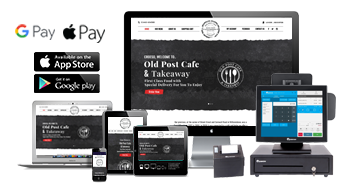
Introduction
A memorable identity helps make restaurant’s brand stand out. It builds loyalty and brings in new customers who connect with your story and offerings.
With Pages, you can design strong restaurant branding materials like menus, websites, and graphics. This keeps your identity cohesive as you grow.
A memorable identity helps make restaurant’s brand stand out. It builds loyalty and brings in new customers who connect with your story and offerings. Pages, you can design strong restaurant branding materials like menus, websites, and graphics. This keeps your identity cohesive as you grow.
Follow this guide to:
Understand your restaurant’s vision and target audience
Learn basic restaurant branding ideas like fonts, colors, and guides
Create a unique logo and visual image
Take appealing food photos
Promote your restaurant brand through marketing
Track performance and seek customer feedback
Let’s dive in!
II. Understanding Your Restaurant Brand
First, get clear on your restaurant’s mission, audience, and brand positioning:
A. Define Your Vision and Mission
What are your goals, brand values, and reason for being?
Craft an inspiring vision and mission statement that communicates your purpose.
B. Identify Your Target Audience
Research demographics like age, income level, location.
Understand their values, interests, and preferences.
Create customer personas to represent your ideal customer.
C. Analyze the Competition
Research direct and indirect competitors in your area.
Compare their pricing, concepts, branding, strengths, and weaknesses.
Find gaps or needs you can fill.
D. Conduct a SWOT Analysis
Evaluate your restaurant’s strengths, weaknesses, opportunities and threats.
This will inform your approach and overall restaurant branding strategy.
III. Branding Basics in Pages
With your brand strategy in place, build your restaurant branding foundations in Pages:
A. Set Up Pages for Branding
Create templates for menu designs, flyers, packaging, and social posts.
Import your logo, colors, and fonts into Pages for easy access.
B. Choose Fonts and Colors
Pick 1-2 complementary fonts that represent your restaurant’s brand personality.
Select 2-3 colors for your core color palette.
C. Make a Brand Style Guide
Document guidelines for your visual image, voice, logo usage, etc.
This helps maintain consistency as you expand.
IV. Crafting a Unique Restaurant Logo
Your logo is a key part of your visual image:
A. Importance of a Logo
Instantly communicates your brand to customers.
Makes your restaurant recognizable and memorable.
B. Sketch and Brainstorm Logo Ideas
Sketch concepts based on your brand vision and audience.
Refine and get objective feedback.
C. Design Options in Pages
Use vector tools to create logo concepts.
Test different fonts, colors, and styles.
D. Logo Design Tips
Keep it simple and scalable. Make sure it’s legible at small sizes.
Consider versatility for different uses like print and digital.
V. Naming Your Restaurant
Your name and tagline also impact your trade identity:
A. Selecting a Restaurant Name
Brainstorm names that reflect your brand.
Check domain availability.
Ensure it’s memorable, clear, and simple.
B. Crafting a Tagline
Summarize your mission or differentiate your restaurant.
Intrigue customers. Keep it short and catchy.
C. Incorporate into good Restaurant Branding
Prominently include your name and tagline in branding materials.
Register necessary trademarks.
VI. Building Your Visual Identity in Pages
Bring your identity to life across platforms:
A. Menus, Business Cards, and More
In Pages, design templates for essential items like menus, visiting cards, and stationery.
Maintain consistency with colors, fonts, and other elements.
B. Restaurant Website Design
Select a template, theme, photos, and tools to build your site in Pages.
Optimize site navigation and user experience.
C. Social Media Graphics
Create templates for profile images, post designs, and more.
Schedule social posts and stories directly in Pages.
D. Leverage Design Resources
Use sites like Canva for easy templates and icons.
Stock sites provide affordable, high-quality photos and illustrations.
VII. Food Photography and Imagery
Quality photos help showcase your dishes and brand:
A. Importance of Food Photography
Makes menu items look appealing and enhances cravings.
Allows customers to visualize dishes.
B. Professional Photo Shoots
Hire a skilled local food photographer.
Artfully style and arrange dishes.
C. Photo Editing in Pages
Adjust lighting, colors, cropping, and details.
Easily add text, logos, and overlays.
VIII. Maintaining Consistency
Keep your identity cohesive across touchpoints:
A. Stay Consistent
Use your brand guide and templates to maintain consistency.
Review materials periodically to check compliance.
B. Apply Your Brand Identity Broadly
Extend your visual image to your interior design, website, social networking, packaging, etc.
Educate staff on brand standards.
C. Check Messaging and Tone
Ensure your language and voice align across platforms.
Proofread all materials carefully.
Restaurant Marketing Campaign examples
Running impactful marketing ideas and trends is critical for restaurants to build awareness, drive traffic, and promote their brand. From social networking contests to experiential events, here are some of the top marketing examples and trends to consider.
Social Media Contests
Social contests are an engaging way to grow your audience and increase engagement.
Photo contests that encourage customers to post images of your food or restaurant for a chance to win a prize.
Caption contests where users submit funny or creative captions for one of your photos. The best caption wins.
User-generated content campaigns that invite social sharing around a hashtag. Offer incentives for participation.
Experiential Marketing
Experiential marketing makes an emotional connection through unique live experiences.
Food truck events where you take your restaurant on the road and serve dishes in different locations.
Partnering with local farmers markets or festivals to have an on-site presence.
Pop-up dining events in unconventional spaces like art galleries or stores.
Seasonal Campaigns
Seasonal campaigns capitalize on holidays, events, or changing menus.
Valentine’s Day promotions like couple’s prix fixe menus and romantic decor.
Easter brunch specials, decorations, and family meals to-go.
Summer kick-off menus with fresh seafood, cocktails, and light dishes.
Fall harvest recipes and decor drawing on autumnal flavors and imagery.
Influencer Marketing
Influencer marketing collaborates with popular social network figures.
Inviting food bloggers or local influencers for a complimentary meal in exchange for reviews.
Sponsoring recipe videos or posts created by influencers.
Co-hosting or catering an influencer event.
Loyalty Programs
Loyalty programs encourage repeat business and word-of-mouth.
Punch cards that offer a reward after a certain number of visits/purchases.
Points-based programs that build up to discounts and free menu items.
Tiered programs with exclusive events and offers for top spenders.
New member promotions like a complimentary appetizer or free delivery.
Integrating creative marketing campaigns into your overall strategy can drive tangible results in brand awareness, customer acquisition and loyalty. Analyze performance and continue iterating on what resonates.
Creative marketing ideas and trends for restaurants
Running a restaurant takes more than just great food – you need to get customers in the door. With competition fierce, it’s crucial to implement creative marketing ideas to make your restaurant stand out. ‘
Follow these tips to build your brand and connect with customers.
Optimize Your Online Presence
Focus on improving your online visibility and engagement.
Create an inviting website that spotlights your brand identity and draws visitors in. Use bold images, clean design, and easy navigation.
Be active on social networking channels like Instagram and Facebook. Share photos, run contests, and engage followers.
Claim online profiles on sites like Yelp, Tripadvisor and Google to manage your reputation. Monitor and promptly respond to reviews.
Run targeted online ads to reach local diners. Facebook and Instagram ads can drive traffic and boost awareness.
Leverage Design Trends
Use current trends to make your branding and marketing feel fresh.
Implement a bold, contrasting colors and lively graphics. Vibrant colors pop.
Use handwritten script fonts and chalkboard aesthetics for menus and signage. This feels approachable and artisanal.
Incorporate natural textures and earth tones for an organic, farm-to-table look.
Play with symmetry, geometric shapes and line art for a modern, minimalist style.
Partner with Local Small Businesses
Strategic partnerships provide built-in exposure to new demographics.
Offer discounts at local hotels to attract tourists looking for dining options. Display brochures at concierge desks.
Seek partnerships with concert halls or event spaces to cater events.
Collaborate on joint promotions with bars, coffee shops, or boutiques. Cross-promote on social media.
Sponsor local sports teams and cater their events in exchange for branding exposure. Design custom jerseys with your logo.
On-Site Marketing
Don’t neglect promotion when customers are dining in your restaurant.
Place menu inserts that showcase specials, offerings, and events. Update these frequently.
Add chalkboard specials boards near waiting areas. Vivid descriptions entice impulse orders.
Display customer testimonials and engaging food photos on tables via table tents.
Have servers mention and promote newly added menu items.
With savvy integration of both digital and real-world marketing, you can bolster your restaurant’s brand identity, reach untapped audiences, and drive new business. Focus on highlighting what makes you unique through fresh, strategic promotion.
IX. Promoting and Marketing Your Restaurant Brand
Get the word out about your amazing brand:
A. Brand Promotion Strategies
Pitch your story to media outlets and influencers to build buzz.
Offer promotions and loyalty programs.
Host events and partner with community organizations.
B. Leverage Online Platforms
Advertise on relevant sites and apps.
Partner with delivery services like Uber Eats and DoorDash.
C. Social Media and Influencers
Build your audience and engage followers with content and contests.
Collaborate on sponsored content with influencers.
D. Branding Campaigns in Pages
Plan and track performance of branding campaigns.
Easily design campaign templates and materials.
X. Tracking and Adapting Your Brand
Keep a pulse on your brand identity’s effectiveness:
A. Review Brand Metrics
Track website traffic, sales, social media engagement.
Measure campaign and promotion performance.
B. Gather Customer Feedback
Monitor online reviews and ratings.
Survey customers on brand perception and suggestions.
C. Make Iterative Improvements
Refine any inconsistent or underperforming brand elements.
Evolve your identity as your restaurant business grows.
XI. Conclusion
A strong brand identity is key for restaurant industry success.
Building a memorable brand requires research, creativity, and consistency.
Use this guide to craft unique branding that resonates.
Continuously refine as your business evolves.
With Pages, you have a powerful toolkit to bring your brand vision to life! Execute these best practices to connect with more customers and boost your restaurant’s success.
XII. Links and References
Tanic Design Blog on Successful Restaurant Branding
DesignBro’s Superb Customer Experience’s Brand Building Tips








